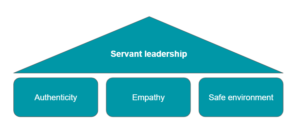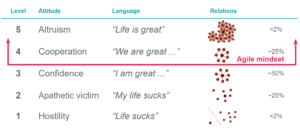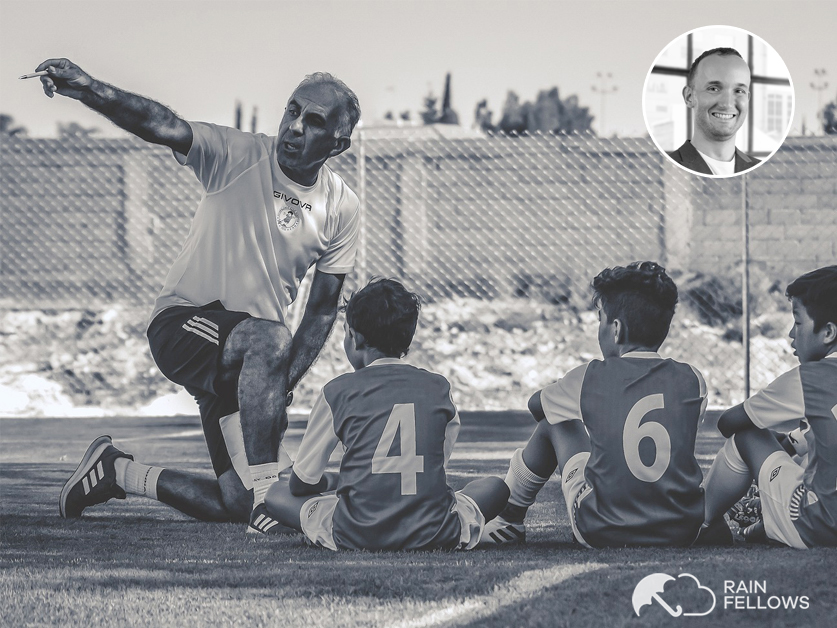During the course of Agile transformations, we often encounter a situation where the role of Agile coach was not present in a company and so it’s needed to fill the position. Companies are looking for a candidate with the right mindset and drive to help the company move to the next level. Finding the right person for this role is often harder compared to “traditional” leadership or managerial positions. In this article, I will try to explain the whole process of how we approach this challenge with our clients.
But first, let me summarize the aspects that (at least for us) are crucial for the role of Agile coach because they affect the process. We often come across people with lots of certifications, courses, and theoretical knowledge but very often it’s not enough. That’s the reason why our goal is to focus on specific inner qualitative aspects of the candidates.
First of all, our focus is that the person who will have the role of the Agile coach is the one, with whom everyone in the team and in the department would feel safe. Because if (s)he is able to create and maintain a safe environment, there is a much better chance that people will follow him/her throughout the harder parts of the transformation.
Because the coach will, using servant leadership, lead others, another part we are focusing on is authenticity, in other words, the ability to “be yourself”. It might sound easy but what we’ve encountered a couple of times is that a person carries some kind of a life mask (like always smiling in pressure situations or neverending poker face) and that carries over to the role of coach. That makes the person inauthentic for others, hard to read, and practically makes it often impossible to succeed in the role. Therefore, for us, this is a key thing that we are trying to uncover because it’s mainly about feeling good in the role which in turn means that he/she can be authentic.
The next part we are targeting is the skill of empathy. Not only in the context of 1on1 discussions but also from the perspective of the company and its goals. In real life, it means understanding the feelings and behaviors of anyone in the team by putting it in the context of team/company/personal goals. This skill is very apparent mainly during high-pressure situations and conflicts where it’s often easier for the coach to keep defending the team but it might not always be the best way forward. 
It might all sound too fuzzy and intangible to you because all the knowledge of frameworks, methods, etc. is missing. But these are exactly the things that are very easy to learn and for a person with the right mindset, it’s usually not an issue. That’s the reason why recruiters often say “Hire for mindset, not for skills” and in the role of a coach it applies even more than in other roles.
Based on our experience with one of our customers we will now look at the whole coach selection process in more detail:
- At the start of the process, the candidates play a model situation with one of us. Each of the model situations we have prepared is based on real situations and cases we have experienced first-hand in the companies where we’ve worked until now. The coach is put in a situation where (s)he has to solve quite an unpleasant problem/conflict and the other side is played by one of us. Each situation starts from some sort of a starting point but from that point on it’s basically a “blank canvas” and that gives us endless possibilities to react differently based on the approach of the candidate. As a part of this model situation, we are able to explore the personality of a specific candidate, the mindset, attitude, (hidden) biases, and the ability to work with emotions.
- With each of the candidates, we then have a reflection on the whole simulation where we explore even deeper and we are focusing on why there were certain kinds of reactions, how it felt, what were the other considered strategies. Thanks to this reflection we can understand all the aspects described above even better – how empathic was it, if the person is authentic in the role or if there was some sort of a mask etc. This part is also a sort of self-reflection test because that’s one of the key attributes for the role of a coach. After the model situation and this interview we are now able to tell the specific Tribal leadership level the person is at and if the level is a good fit for the role of a transformation coach (the goal is at least level 4 – “We are great”, see picture below).

- After the reflection, we ask some questions about the candidate’s career, motivation, experience, etc. But it’s fair to say that after the first two parts it’s usually pretty clear if someone is a good fit for the role of a coach or not. These questions very rarely uncover something unexpected that would not already be obvious from the situation and the discussion
- The result of all these steps is not only saying who has the potential to be a great Agile coach but for the successful candidates, there is also something called Gap analysis which maps the development areas for the candidates so that they all know what to work on going forward.
 What makes it different from the “classic” assessment centers? Thanks to our active participation in the model situation we are able to map a candidate and go very deep in terms of mindset, authenticity, maturity, and empathy. It gives us unlimited flexibility in what we focus on, the ability to react to how the other side behaves, and the opportunity to go deep enough and understand if the candidate is a good fit for this role for a specific company. Moreover, we have HR people from the company there with us as partners during the whole process so that we can understand and take into account the context and the needs of the company (or a specific department and how a person would fit into the coach role in a specific environment). Also thanks to this we have different perspectives on the candidates which helps in limiting potential biases and blind spots. Of course, not everyone makes it to the next stage, but the design of the whole process helps in making it a learning experience for everyone regardless of the result by providing areas for improvement so a person can try the role in the future.
What makes it different from the “classic” assessment centers? Thanks to our active participation in the model situation we are able to map a candidate and go very deep in terms of mindset, authenticity, maturity, and empathy. It gives us unlimited flexibility in what we focus on, the ability to react to how the other side behaves, and the opportunity to go deep enough and understand if the candidate is a good fit for this role for a specific company. Moreover, we have HR people from the company there with us as partners during the whole process so that we can understand and take into account the context and the needs of the company (or a specific department and how a person would fit into the coach role in a specific environment). Also thanks to this we have different perspectives on the candidates which helps in limiting potential biases and blind spots. Of course, not everyone makes it to the next stage, but the design of the whole process helps in making it a learning experience for everyone regardless of the result by providing areas for improvement so a person can try the role in the future.
If you find this article and the process interesting enough for you to try it in your company, send us a message. In case you want to try it out from the perspective of the candidate, contact our colleague Roman and as a part of our project called TL5 (Tribal leadership level 5) you have the opportunity to experience it yourself.

